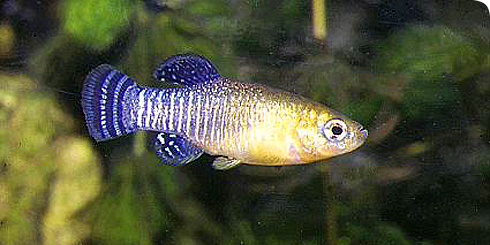Biology
A. iberus is an eurythermic and euryhaline cyprinodontid which mainly inhabits brackish water of salt marshes, coastal lagoons and river-mouths (Moreno-Amich et al. 1999, Oltra & Todolí 2000), although it also occurs in freshwater and/or low salinity creeks.
The biology of the species is characterized by fast growth and reduced longevity (Agemax < 2+) (García-Berthou & Moreno-Amich 1992, Vargas & De-Sostoa 1997, García-Berthou et al. 1999).
A.iberus has not shown a wide trophic spectrum; it has an omnivorous diet with temporal variations.
Preys are mainly crustaceans and insects only represented 15% of his diet (Vargas & De Sostoa 1999).
Size
Males (total length max ≤ 40 mm) are smaller overall than females (total length max ≤ 55 mm).
Life Expectancy
Up to 2 years.
Physiology
As an euryhaline they tolerate an extraordinary range of salinity with a range of mechanisms to mantain homeostasis such as in excretion (Oliva-Paterna et al. 2007).
-
Reproduction
The Iberian toothcarp is a dioecious and oviparous species. Find out more about its reproductive processes.
